Quadrants are used when we graph points on a coordinate plane. They help us to classify angles and when we are working with trig functions.
So, what are the quadrants on a graph? The quadrants on a graph are the 4 parts of a 2D plane, labeled I (top right), II (top left), III (bottom left), IV (bottom right). Each quadrant is an infinite region. Adjacent quadrants meet on a half-axis (positive or negative half of an axis). All 4 quadrants meet at the origin (0, 0).
Of course, the quadrants on a graph tell us about the signs of the x and y coordinates of points (ordered pairs) in a given quadrant. They also tell us which angles are in each quadrant, and the signs of trig functions in each quadrant.
In this article, we’ll talk about the 4 quadrants on a graph and how they are labeled. We’ll also answer some common questions about quadrants.
Let’s get started.
What Are The Quadrants On A Graph?
The quadrants on a graph are the four parts of a 2D Cartesian plane. Each quadrant is an infinite region, and adjacent quadrants meet on half of an axis (the positive or negative half of the x or y axis).
All four quadrants on a graph meet at the origin, or at the point represented by the ordered pair (0, 0).
How Are Quadrants Numbered In A Graph?
Quadrants in a graph are numbered with Roman numerals from I to IV (1 to 4) as follows:
- The top right quadrant is labeled I, and in this quadrant, ordered pairs have positive x values and positive y values.
- The top left quadrant is labeled II, and in this quadrant, ordered pairs have negative x values and positive y values.
- The bottom left quadrant is labeled III, and in this quadrant, ordered pairs have negative x values and negative y values.
- The bottom right quadrant is labeled IV, and in this quadrant, ordered pairs have positive x values and negative y values.
You can see a graph of a 2D Cartesian plane with labeled quadrants below.

The table below shows the label, location, and coordinate signs for each of the four quadrants.
| Quadrant | Label | Location | (x, y) Signs |
|---|---|---|---|
| First | I | Top Right | (+, +) |
| Second | II | Top Left | (-, +) |
| Third | III | Bottom Left | (-, -) |
| Fourth | IV | Bottom Right | (+, -) |
and coordinate signs for each
of the four quadrants.
Let’s look at some examples of points in various quadrants.
Example 1: Point In The First Quadrant (Quadrant I)
Consider the point (3, 4). This is an ordered pair with coordinates x = 3 and y = 4.
Since both the x and y coordinates are positive, we have a point of the form (+, +). Based on the table above, this tells us that the point is in the first quadrant (Quadrant I).
We can verify this by graphing the point on a coordinate plane, as shown below.
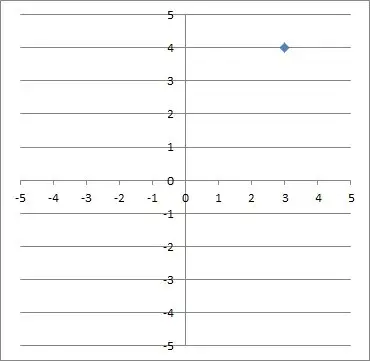
Example 2: Point In The Second Quadrant (Quadrant II)
Consider the point (-2, 3). This is an ordered pair with coordinates x = -2 and y = 3.
Since the x coordinate is negative and the y coordinate is positive, we have a point of the form (-, +). Based on the table above, this tells us that the point is in the second quadrant (Quadrant II).
We can verify this by graphing the point on a coordinate plane, as shown below.

Example 3: Point In The Third Quadrant (Quadrant III)
Consider the point (-4, -5). This is an ordered pair with coordinates x = -4 and y = -5.
Since both the x and the y coordinates are negative, we have a point of the form (-, -). Based on the table above, this tells us that the point is in the third quadrant (Quadrant III).
We can verify this by graphing the point on a coordinate plane, as shown below.
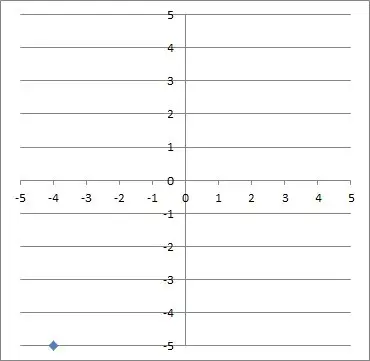
Example 4: Point In The First Quadrant (Quadrant I)
Consider the point (1, -2). This is an ordered pair with coordinates x = 1 and y = -2.
Since the x coordinate is positive and the y coordinate is negative, we have a point of the form (+, -). Based on the table above, this tells us that the point is in the fourth quadrant (Quadrant IV).
We can verify this by graphing the point on a coordinate plane, as shown below.
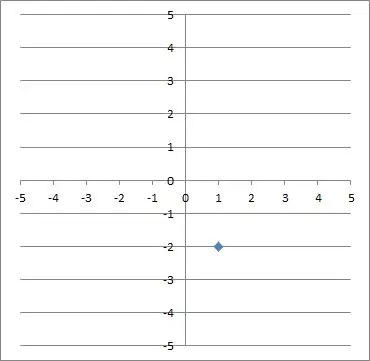
Does Every Point Lie In A Quadrant?
Not every point lies in a quadrant. Any point with a zero coordinate (either x or y) does not lie in a quadrant.
Instead, these points lie on the x or y axis, on the boundaries between quadrants. The table below shows which axis a point lies on, based on which coordinate is zero.
| Zero Coordinate | Axis |
|---|---|
| x | y-axis |
| y | x-axis |
| Both | Both (origin) |
a point lies on, based on
which coordinate is zero.
Let’s look at some examples of points that do not lie in a quadrant.
Example 1: Point That Does Not Lie In A Quadrant (Zero X Coordinate)
Consider the point (0, 3). This is an ordered pair with coordinates x = 0 and y = 3.
The x coordinate is zero and the y coordinate is nonzero. Based on the table above, we have a point on the y axis.
We can verify this by graphing the point on a coordinate plane, as shown below.
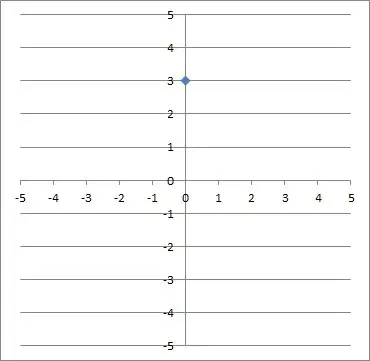
Example 2: Point That Does Not Lie In A Quadrant (Zero X Coordinate)
Consider the point (-2, 0). This is an ordered pair with coordinates x = -2 and y = 0.
The x coordinate is nonzero and the y coordinate is zero. Based on the table above, we have a point on the x axis.
We can verify this by graphing the point on a coordinate plane, as shown below.
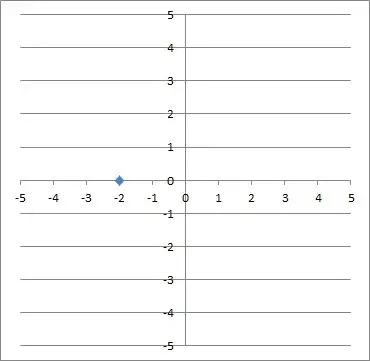
Example 3: Point That Does Not Lie In A Quadrant (Origin)
Consider the point (0, 0). This is an ordered pair with coordinates x = 0 and y = 0.
The x coordinate is zero and the y coordinate is zero. Based on the table above, we have a point on both the x axis and the y axis.
Specifically, this point is the origin. It lies at the one point where all four quadrants meet – the same place that the x axis and y axis intercept.
We can verify this by graphing the point on a coordinate plane, as shown below.
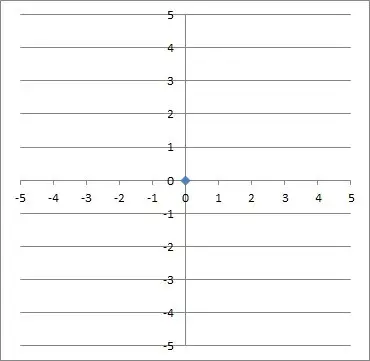
Can A Point Be In Two Quadrants?
A point cannot be in two quadrants. This is because each coordinate (x and y) can either be positive, negative, or zero.
A value cannot be both positive and negative, or positive and zero, or negative and zero.
A point that lies on the boundary between two quadrants (on the x axis or y axis) is not in both quadrants. Instead, that point is in neither quadrant.
Quadrant Angles (Degrees & Radians)
In addition to coordinate values, we can define quadrants by angles. Just take any point (a, b) in the coordinate plane and draw a line segment from the origin (0, 0) to the point (a, b).
Then, draw an arc from the positive x axis (the bottom of the first quadrant) to the line segment that joins (0, 0) and (a, b). The arc traces out an angle that we can measure.
[image of arc angle, point a,b and line segment, origin, etc.]
The quadrant angle chart below shows which angles are contained in each quadrant (in both degrees and radians).

The table below also shows the angles in each quadrant in degrees and radians.
| Quadrant | Angle A Measure (degrees) | Angle A Measure (radians) |
|---|---|---|
| I | 0<A<90 | 0<A<π/2 |
| II | 90<A<180 | π/2<A<π |
| III | 180<A<270 | π<A<3π/2 |
| IV | 270<A<360 | 3π/2<A<2π |
quadrant in degrees and radians.
Let’s look at some examples of angles in various quadrants.
Example 1: Angle In The First Quadrant (Quadrant I)
Consider the point (1, 1). The line segment from the origin (0, 0) to this point forms an angle of 45 degrees.
Since both the x and y coordinates are positive, we have a point of the form (+, +), which suggests Quadrant 1. We can confirm this based on the table above, which tells us that an angle of 45 degrees is in the first quadrant (Quadrant I).
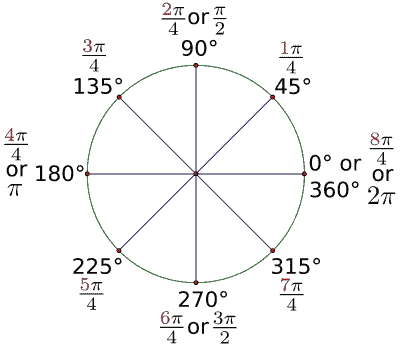
Example 2: Angle In The Second Quadrant (Quadrant II)
Consider the point (-1, √3). The line segment from the origin (0, 0) to this point forms an angle of 120 degrees.
We have a point of the form (-, +), which suggests Quadrant 2. We can confirm this based on the table above, which tells us that an angle of 120 degrees is in the second quadrant (Quadrant II).

Example 3: Angle In The Third Quadrant (Quadrant III)
Consider the point (-1, -√3). The line segment from the origin (0, 0) to this point forms an angle of 240 degrees.
We have a point of the form (-, -), which suggests Quadrant 3. We can confirm this based on the table above, which tells us that an angle of 240 degrees is in the third quadrant (Quadrant III).

Example 4: Angle In The Fourth Quadrant (Quadrant IV)
Consider the point (1, -1). The line segment from the origin (0, 0) to this point forms an angle of 315 degrees.
We have a point of the form (+, -), which suggests Quadrant 4. We can confirm this based on the table above, which tells us that an angle of 315 degrees is in the fourth quadrant (Quadrant IV).

Why Are Quadrants Counterclockwise?
Quadrants are counterclockwise because angles are counterclockwise. We want Quadrant I to correspond to the smallest angles (between 0 and 90 degrees, or 0 and π/2 radians), and Quadrant II to the angles from 90 to 180 degrees, and so on.
How To Find The Quadrant Of An Angle
To find the quadrant of an angle A in degrees, take the following steps:
- First, reduce A to an angle A’ between 0 and 360 degrees (do this by subtracting 360 as many times as necessary).
- Next, divide A’ by 90.
- Then, calculate the ceiling of A’/90 (the smallest whole number larger than A’/90).
- This gives you the quadrant of A.
If you have an angle in radians, you can convert it to degrees if you multiply by 180/π.
Here are some examples of how to find the quadrant of an angle.
Example 1: Finding The Quadrant Of An Angle
Let’s say we want to find the quadrant of the angle 175 degrees.
The first step is already done, since 175 is between 0 and 360. So A’ = 175.
For the second step, we divide A’ by 90 to get 175/90, which is 1 and 85/90.
For the third step, we take the ceiling of A’/90, which is 2 (the smallest whole number larger than 1 and 85/90).
So, 175 degrees is in the second quadrant (Quadrant II).
Example 2: Finding The Quadrant Of An Angle
Let’s say we want to find the quadrant of the angle 415 degrees.
The first step is to subtract 360, since 415 is not between 0 and 360. After subtracting 360, we get 415 – 360 = 55. So, A’ = 55.
For the second step, we divide A’ by 90 to get 55/90 (which is less than 1).
For the third step, we take the ceiling of A’/90, which is 1 (the smallest whole number larger than 55/90).
So, 415 degrees is in the first quadrant (Quadrant I).
Where Are Trig Functions Positive & Negative?
We can use the memory device ASTC to remember where the three basic trig functions are positive and negative. The acronym ASTC stands for “All Students Take Calculus”.
The A, S, T, C letters corresponds to the quadrant labels 1, 2, 3, 4, so:
- A is quadrant 1 – A stands for “All”, and it means that all of the trig functions are positive in the first quadrant.
- S is quadrant 2 – S stands for “Sine”, and it means that only sine is positive in the second quadrant (cosine and tangent are negative).
- T is quadrant 3 – T stands for “Tangent”, and it means that only tangent is positive in the third quadrant (sine and cosine are negative).
- C is quadrant 4 – C stands for “Cosine”, and it means that only cosine is positive in the fourth quadrant (sine and tangent are negative).
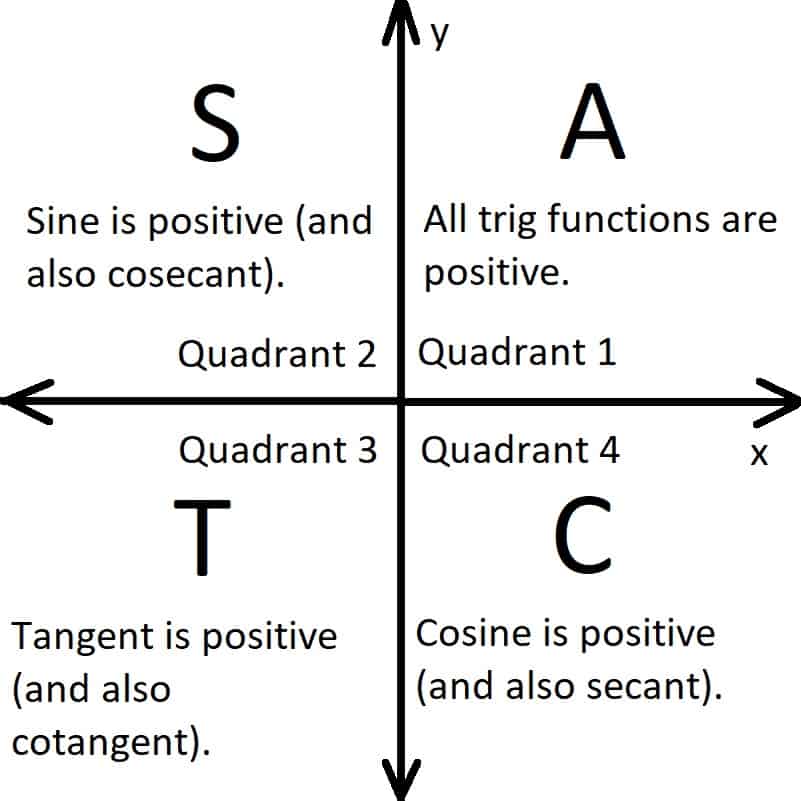
The table below summarizes the signs of the trig functions in each quadrant:
| Function | Q1 | Q2 | Q3 | Q4 |
|---|---|---|---|---|
| Sine | + | + | – | – |
| Cosine | + | – | – | + |
| Tangent | + | – | + | – |
| Secant | + | – | – | + |
| Cosecant | + | + | – | – |
| Cotangent | + | – | + | – |
function by quadrant (Q1, Q2, Q3, Q4
correspond to A, S, T, C).
You can learn more about trig functions and their signs in my article here.
Conclusion
Now you know the quadrants on a graph and what they mean in terms of coordinates (ordered pairs) and angles. You also know how quadrants affect the signs of trig functions like sine, cosine, and tangent.
I hope you found this article helpful. If so, please share it with someone who can use the information.
Don’t forget to subscribe to my YouTube channel & get updates on new math videos!
~Jonathon

